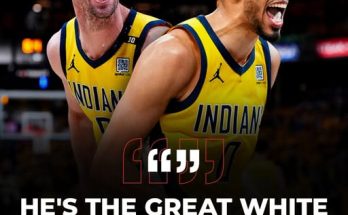The ACC continues to be one of the most active conferences in the transfer portal this spring, and over the past week, some of the league’s top programs have made serious moves to bolster their rosters. NC State, Notre Dame, and Clemson all made key additions that could have immediate impacts on the 2025-26 college basketball season. With talent rapidly moving around the country, these three programs positioned themselves to remain competitive in what’s expected to be a fiercely contested ACC slate next year.
For NC State, Kevin Keatts is fresh off one of the most surprising postseason runs in recent memory. The Wolfpack turned heads in March with a magical ACC Tournament championship followed by a deep NCAA Tournament run. Now, with momentum at an all-time high, Keatts has turned his attention to reloading. That effort led to a major victory in the portal with the commitment of former Arizona State big man Shawn Phillips Jr. A 6-foot-11, 250-pound center with serious upside, Phillips brings interior toughness, shot-blocking prowess, and a physical presence that Keatts has prioritized since day one in Raleigh.
Phillips averaged 9.6 points, 6.2 rebounds, and 1.8 blocks per game last season in the Pac-12 and was one of the more sought-after frontcourt pieces in the portal. His decision to commit to NC State speaks volumes about the program’s upward trajectory. With DJ Burns Jr. moving on, the Wolfpack needed a replacement who could control the paint and anchor the defense. Phillips fits that bill perfectly. His motor, rebounding tenacity, and improving offensive skill set make him a likely starter from day one, and Keatts now has a centerpiece to build his frontcourt around.
But NC State didn’t stop there. The Wolfpack also picked up shooting guard Elijah Hawkins, a high-IQ perimeter player from Minnesota who averaged 8.1 points and 5.7 assists per game last season. Hawkins brings elite court vision, a reliable outside shot, and excellent pick-and-roll decision-making. Together with Phillips, he represents a retooled, balanced addition to the NC State rotation that should allow Keatts to play fast, defend aggressively, and stretch the floor offensively.
Hawkins is also a gritty defender with experience guarding multiple positions. That fits Keatts’ blueprint: defense-first guards who can push the tempo and thrive in transition. NC State’s backcourt depth had taken a hit with some offseason departures, but Hawkins is a veteran who can handle the ball, facilitate for others, and step into a leadership role. When you pair that with a rim protector like Phillips, NC State’s identity for next season is already starting to take shape. The program isn’t just resting on its March success—it’s actively building a roster to do it again.
Meanwhile, up in South Bend, Micah Shrewsberry continues to show he’s not going to be content with rebuilding slowly. After a tough first season at Notre Dame, marked by growing pains and roster inconsistency, Shrewsberry has started to add the type of high-level talent that could speed up the turnaround. The Irish landed one of the top wings in the portal in Jalen Warley, a former Florida State standout who chose Notre Dame over a host of other major programs.
Warley, a 6-foot-6 guard with length, versatility, and defensive chops, averaged 11.2 points, 4.5 rebounds, and 3.9 assists last season in Tallahassee. He is a true two-way player who can slide between multiple backcourt spots, handle the ball, defend elite scorers, and initiate offense. For a team that struggled to find consistent guard play last season, Warley is a godsend. He gives Notre Dame a battle-tested ACC player with size, athleticism, and leadership—everything you’d want from a foundational piece.
Shrewsberry’s system, which emphasizes ball movement, spacing, and shooting, should unlock Warley’s offensive potential in a way Florida State’s scheme didn’t always allow. With more freedom, Warley has the tools to emerge as a breakout player on the national stage. He’s not just a plug-and-play starter; he’s someone the Irish will lean on heavily in clutch situations. In a conference where elite guard play often determines who wins close games, Notre Dame just significantly improved its chances.
The addition of Warley is even more critical when you consider Notre Dame’s overall youth. With a roster full of underclassmen and recent recruits, Warley provides much-needed maturity. His ability to serve as a mentor while also delivering on the court gives the Irish a chance to balance growth with competitiveness. It’s a move that signals Notre Dame isn’t going to wait three or four years to contend again. The plan is to accelerate the rebuild, and Warley could be the piece that makes that possible.
Not to be outdone, Clemson made a move of its own, securing a commitment from Towson transfer guard Dylan Williamson. While not the flashiest name in the portal, Williamson is exactly the kind of under-the-radar pickup Brad Brownell has made a career out of developing. The 6-foot-3 guard is coming off a strong season in which he averaged 14.9 points, 3.8 rebounds, and 3.4 assists per game while shooting 38.6% from deep. He’s a three-level scorer who competes on both ends and plays with a chip on his shoulder.
Clemson’s backcourt will need a jolt next season following the departure of key contributors. Williamson’s scoring punch and shooting range give the Tigers an immediate weapon, particularly in late-clock situations. He’s comfortable creating his own shot, can knock down threes in bunches, and has shown a willingness to share the ball when defenses collapse. Brownell loves guards who can both score and distribute, and Williamson fits the mold.
Additionally, Williamson brings defensive toughness. He’s not afraid to get into passing lanes, pressure opposing guards, and dive for loose balls. That’s the kind of mentality Brownell has always prioritized, and it’s helped Clemson exceed expectations in recent years. With the addition of Williamson, the Tigers now have a backcourt piece who can grow into a starter or provide high-level minutes off the bench, depending on how the rest of the roster shakes out.
What’s notable about these moves is that they represent a clear trend in the ACC—coaches are no longer waiting for high school recruits to develop over time. The transfer portal has changed the game, and programs that are aggressive and strategic in the portal are now building winning rosters faster than ever. Whether it’s NC State swinging for the fences, Notre Dame adding an established ACC starter, or Clemson finding value from a mid-major scorer, the message is the same: you win in March by winning the portal in April.
Of course, there are still weeks left in the portal cycle, and more dominoes are expected to fall. But already, the shape of the 2025-26 ACC landscape is becoming clearer. NC State, Notre Dame, and Clemson aren’t just reacting to changes—they’re initiating them. They’ve each identified specific roster needs and filled them with players who can make an immediate difference. It’s a level of roster management that used to take years to execute, now being completed in a matter of days or weeks.
Fans of the conference should expect even more fireworks. Programs like Duke, North Carolina, Virginia, and Miami have also been active or are expected to make moves in the coming days. The ACC, long one of college basketball’s premier leagues, is evolving quickly—and the teams that adapt the fastest will be the ones dancing deep into March. With portal commitments already shaking up projections, this offseason is proving once again that championship teams are just as likely to be built in the spring as they are in the fall.
For now, though, NC State, Notre Dame, and Clemson have won the latest battle. With Phillips and Hawkins in Raleigh, Warley headed to South Bend, and Williamson joining the Tigers, the ACC just got a lot more interesting—and the race to the top is officially on.



